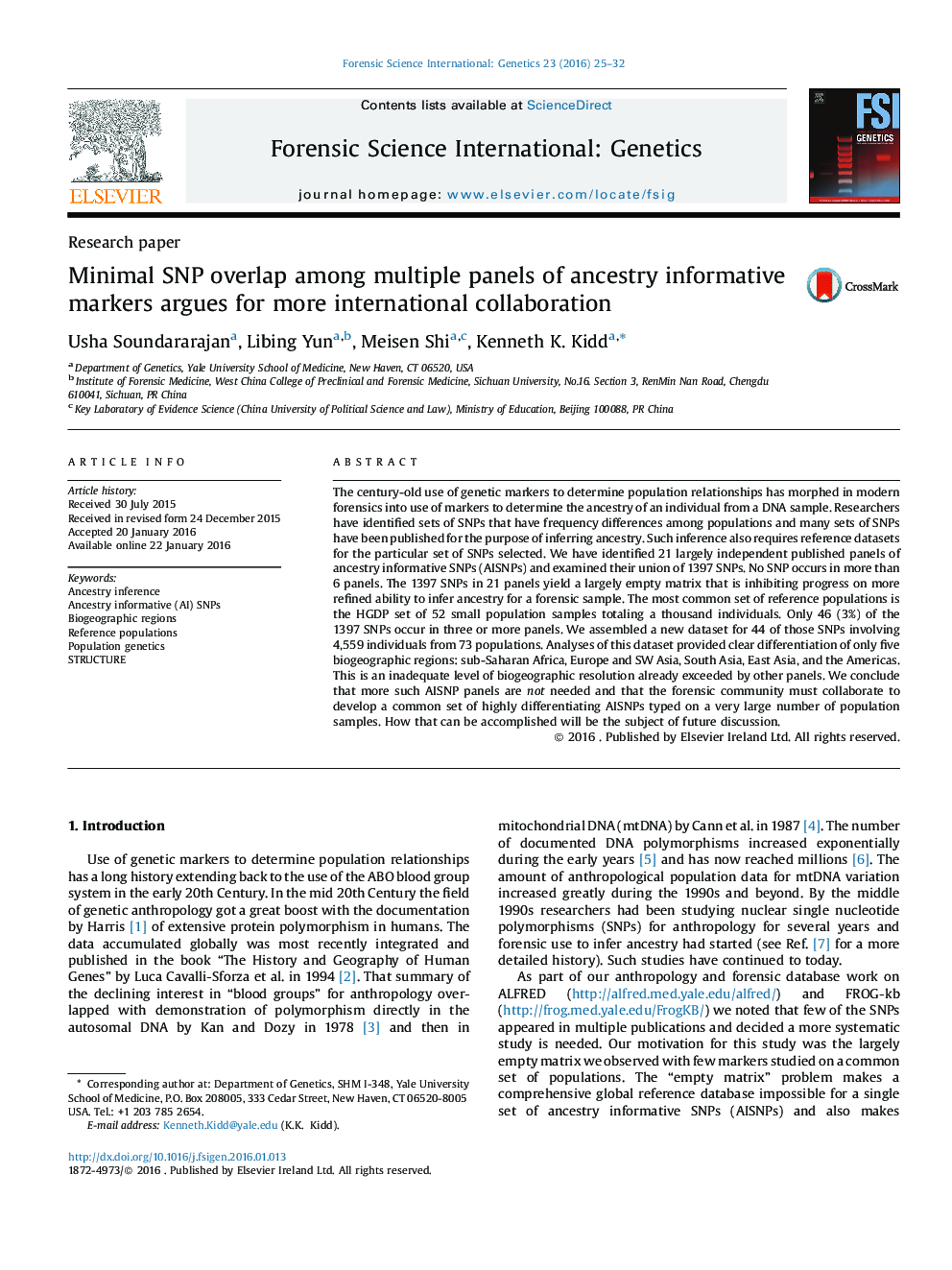| Article ID | Journal | Published Year | Pages | File Type |
|---|---|---|---|---|
| 6553534 | Forensic Science International: Genetics | 2016 | 8 Pages |
Abstract
The century-old use of genetic markers to determine population relationships has morphed in modern forensics into use of markers to determine the ancestry of an individual from a DNA sample. Researchers have identified sets of SNPs that have frequency differences among populations and many sets of SNPs have been published for the purpose of inferring ancestry. Such inference also requires reference datasets for the particular set of SNPs selected. We have identified 21 largely independent published panels of ancestry informative SNPs (AISNPs) and examined their union of 1397 SNPs. No SNP occurs in more than 6 panels. The 1397 SNPs in 21 panels yield a largely empty matrix that is inhibiting progress on more refined ability to infer ancestry for a forensic sample. The most common set of reference populations is the HGDP set of 52 small population samples totaling a thousand individuals. Only 46 (3%) of the 1397 SNPs occur in three or more panels. We assembled a new dataset for 44 of those SNPs involving 4,559 individuals from 73 populations. Analyses of this dataset provided clear differentiation of only five biogeographic regions: sub-Saharan Africa, Europe and SW Asia, South Asia, East Asia, and the Americas. This is an inadequate level of biogeographic resolution already exceeded by other panels. We conclude that more such AISNP panels are not needed and that the forensic community must collaborate to develop a common set of highly differentiating AISNPs typed on a very large number of population samples. How that can be accomplished will be the subject of future discussion.
Related Topics
Life Sciences
Biochemistry, Genetics and Molecular Biology
Genetics
Authors
Usha Soundararajan, Libing Yun, Meisen Shi, Kenneth K. Kidd,
